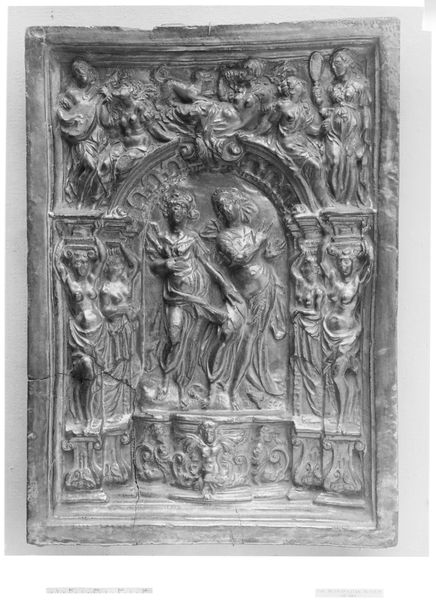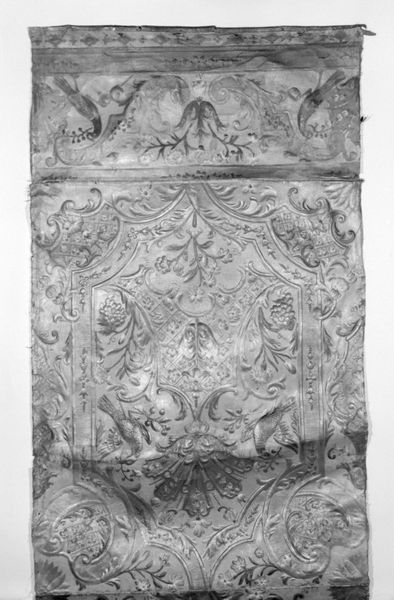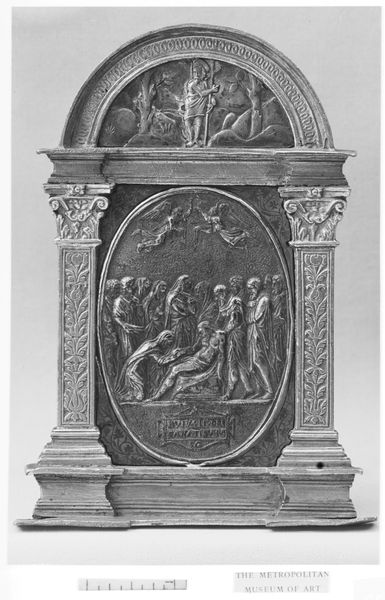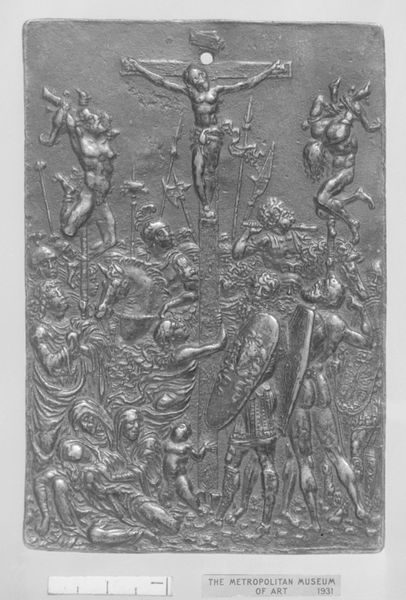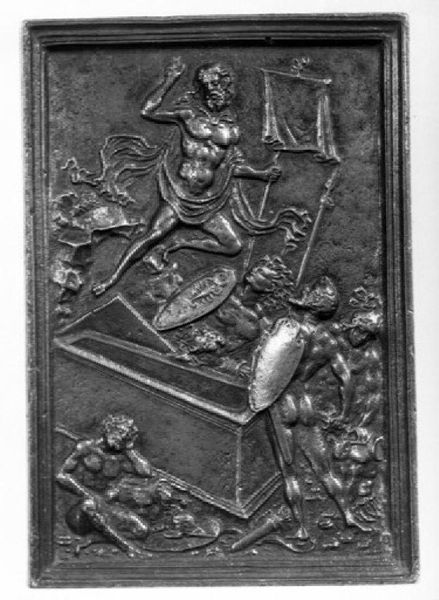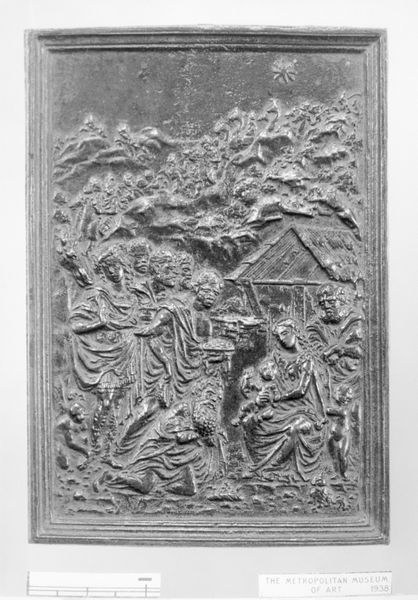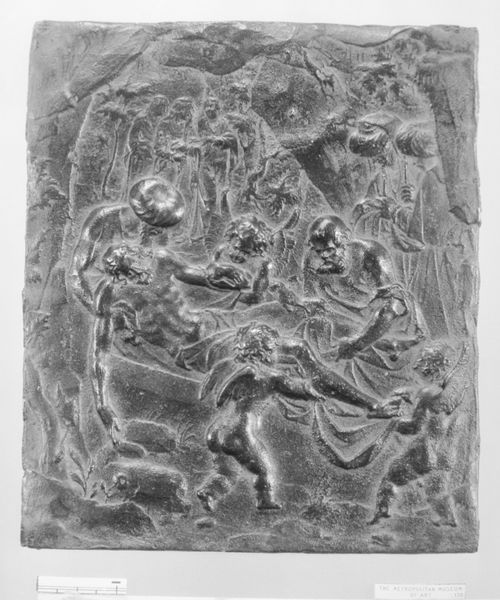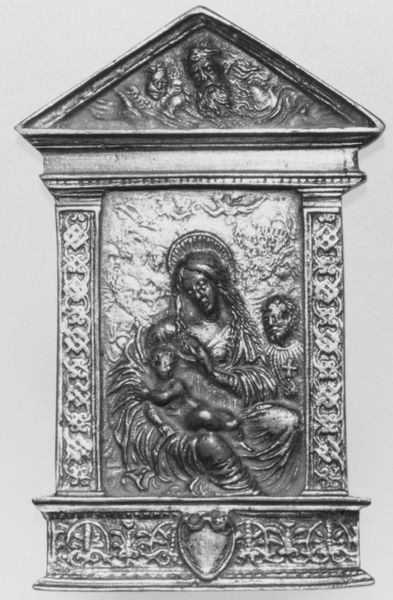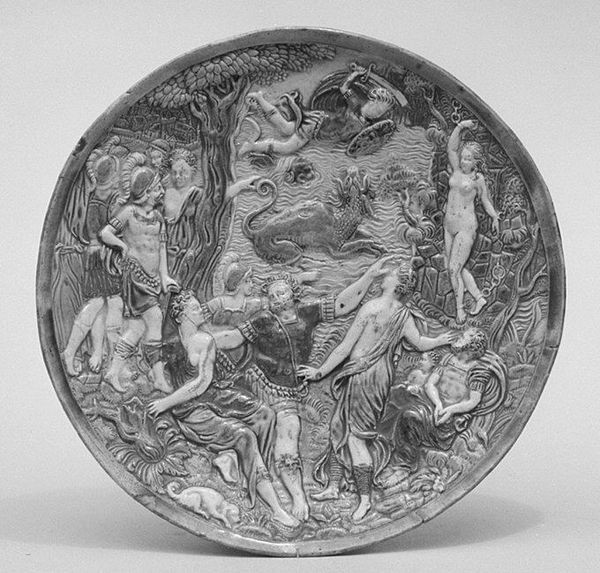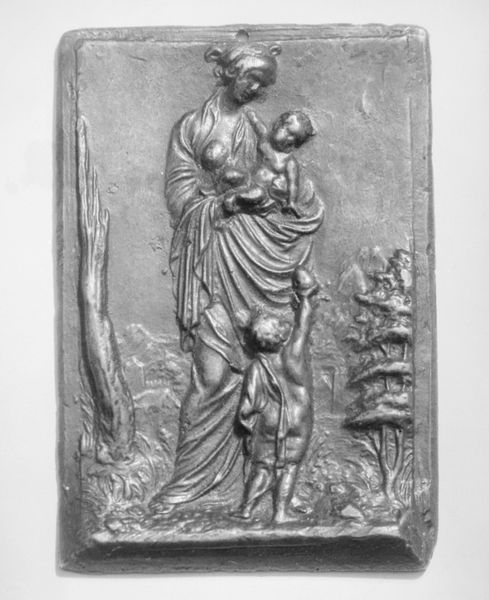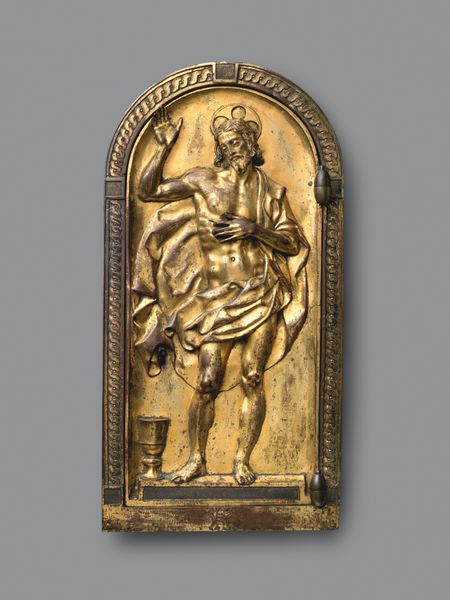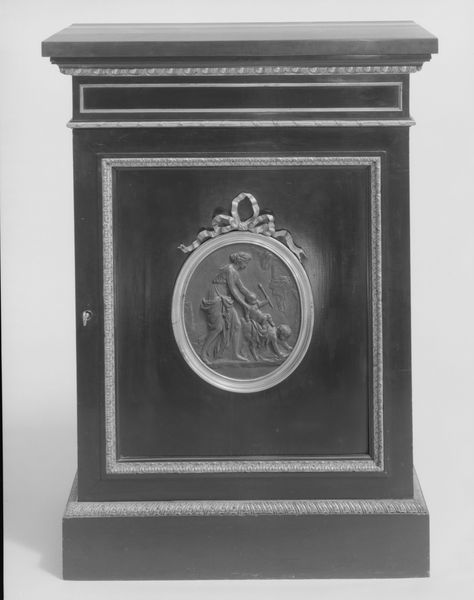
The Dead Christ Supported by the Virgin and St. John 16th century
0:00
0:00
relief, sculpture, marble
#
portrait
#
sculpture
#
relief
#
figuration
#
sculpture
#
history-painting
#
decorative-art
#
marble
#
italian-renaissance
#
virgin-mary
#
statue
#
christ
Dimensions: 4 1/2 × 3 1/4 in. (11.4 × 8.3 cm)
Copyright: Public Domain
Curator: Today we’re observing “The Dead Christ Supported by the Virgin and St. John,” a 16th-century marble relief attributed to Moderno. It currently resides here at the Metropolitan Museum of Art. Editor: It's powerful. My immediate reaction is of intense sorrow, captured in this almost claustrophobic composition. The figures are so tightly packed. Curator: Yes, the figures press forward, evoking the tight social bonds of early Christian community and shared grief experienced in the wake of state violence under Roman imperial rule. We see the Virgin Mary and St. John flanking Christ, each figure acting as a social anchor in that tumultuous time. Editor: I'm particularly struck by the use of the halo; it's subtle but undeniable. The placement and symbolism behind this choice offer significant insights into spiritual power and earthly suffering. Note how they're not uniformly bright; rather, each varies, maybe indicating their respective closeness to Christ’s divinity, their differing emotional states, their internal suffering made visible. Curator: Good point. It could reflect gradations of access and privilege that shape their emotional and social relationship to Christ as both divine and mortal. These access points, as theorized by critical race and feminist studies scholars, illuminate deeply rooted power imbalances that continue to play out in religious contexts. Editor: Exactly. Consider how the artist captures Christ's lifeless form; it resonates profoundly. The details, the textures achieved in marble. I also can't help but wonder about the model--it must have been physically and emotionally draining to adopt such a sorrowful position. There’s a vulnerability in those postures that pierces the centuries. Curator: And let’s not overlook the socio-political context of religious representation. It was indeed radical at the time for marginalized individuals and communities to reclaim their narratives and experiences through visual art. Editor: This piece feels relevant even now, especially considering the ongoing struggles around social justice. What would you say is its ultimate message for today’s viewers? Curator: That resilience in the face of overwhelming injustice comes through collective mourning, a community bound by care and a shared desire for transformation. Editor: And that imagery, these symbolic gestures, help carry that hope forward through generations.
Comments
No comments
Be the first to comment and join the conversation on the ultimate creative platform.

